[gentle music] – Welcome to University Place Presents.
I’m Norman Gilliland.
The Yerkes Observatory in Williams Bay, Wisconsin, is one of the most famous observatories in the world, and it’s certainly a fascinating place in its own right.
Over the years, as times have changed, the mission of the observatory has changed, too, and we’re going to look into its illustrious past and its exciting future.
With me is the Deputy Director and Head of Science and Education at Yerkes Observatory.
Welcome to University Place Presents, Amanda Bauer.
– Thank you for having me.
– What a fun job.
– It’s incredible.
[chuckling] Every day presents new adventures and challenges.
– Kind of a dream job for an astronomer?
– It really is.
For someone who’s interested in both the research, the outreach, the education, the arts, the kind of uncovering the story of the past, all of those things really combined together.
– Well, Yerkes certainly has a past to it, and it has a rather interesting beginning, doesn’t it, some colorful characters involved in this landmark.
– And they’ve left their mark on the building itself.
[laughing] – Norman: What kind of marks have they left?
– Amanda: Well, the architecture itself, the building has faces, it has astronomical designs, it has owls, it has lots of creatures that are sort of of the night or represent wisdom all around it, and that was a little bit of a nod to the astronomy, but also Henry Ives Cobb, who was the architect, was able to have a little bit of fun with this building.
– Who was Yerkes?
– Yerkes was not an astronomer, as some people think.
Charles Yerkes was kind of a swindler, a financier in Chicago.
He got a fortune by building the L Train, which is quite famous, but he got a bad reputation by sort of shoving people out of their homes in order to make way for the train to come through.
He’d already gotten kicked out and indicted from other places, so he came to Chicago to try to rebuild his reputation a little bit.
– Norman: [laughing] Not the best place to choose.
– Well, he definitely built a fortune there, so when the University of Chicago was founded in the early 1890s, they brought on George Ellery Hale, who was the young visionary astronomer, and they approached Yerkes to fund this new biggest telescope, most incredible observatory in the world at the time.
– Is Yerkes himself represented in the observatory in any way?
– It’s one of the most common faces that you see both outside and inside in the rotunda, where you enter.
There are pillars that have Yerkes’s face on each side of the pillar, but he has little devil horns, and he’s got a mustache that sometimes is looking down and sometimes is curled up, but they’re all different.
– Is anybody else represented?
– There are.
There are three key figures that are represented.
On the exterior, there are pillars.
One is sort of a chubby-cheeked character who we believe is the president of the University of Chicago, and then the other one has a very long nose, unusually long nose, and this is Rockefeller.
– Norman: John D. Rockefeller Sr. – Amanda: John D. Yeah, he funded the University of Chicago.
Henry Ives Cobb had also designed the main buildings of the campus at the time.
– Did any of them actually see this building?
– [laughing] They did.
Well, so when Hale came out to prepare for the actual dedication of the building, what originally was on that long nose were little bees that were stinging the nose because the phrase at the time was you were stinging him for money, and so every single face had these little bees, and Hale said, “You can’t do that,” and hired someone to come and actually scrape off all the bees, so what we have left is the profile of a very long nose, and you could see some texture where maybe 80 different bees had to be scraped off ahead of the dedication.
– Norman: And thereby hangs a tale.
[Amanda laughing] We’re talking about what year for its actual opening then of the Yerkes Observatory?
– Amanda: 1897.
– Norman: And Williams Bay, Wisconsin, somewhat quieter then than it is now, somewhat less light-polluted?
– Amanda: It’s actually still a pretty small town.
Williams Bay is a village of only 3,000 people on Geneva Lake, and so it’s pretty small.
There was a train that came out to the area that got the goods out there and the materials.
Yerkes was told, “Hey, this can rebuild your reputation if you invest in this.”
And he said, “Okay, but only if it’s within 100 miles of Chicago.”
– Norman: Okay, they got that part right.
– And so the smog of the city, the lights of the city, they couldn’t build the observatory there, and Hale already had his eyes on the mountains.
He knew he wanted to go out to California ’cause we knew that’s really where you wanted to build the future observatories, but to get the funding, they chose Williams Bay, which is a beautiful site, and actually, among Midwestern observatories, it still has pretty good light pollution qualities because we’re still outside of Milwaukee, outside of Madison, outside of Chicago.
– So what would I actually see if I looked through the telescope at Yerkes in Williams Bay there, not too far from Chicago, not too far from Milwaukee?
What would I actually see?
– Amanda: That’s right.
So we can go and use the Great Refractor telescope.
It’s still the largest telescope of its kind in the world, and we use it now with eyepieces so we can look through and we can see things.
For instance, I will show you one of the images.
This is one of the earliest images that was ever captured.
– Looks like a Rorschach test.
– [laughing] It kind of does.
It’s a more simple one.
So this is a star cluster.
It has maybe 500,000 individual stars that are all clumped together through gravity.
They were– – Is that part of a galaxy, or is it on its own?
– It’s on its own.
This cluster lives on its own, but it is one of many star clusters that orbit around individual galaxies, so this is one of the examples from our Milky Way Galaxy, and this was captured in about 1900.
– And so obviously, the light quality was pretty good in 1900 at Yerkes.
– Yeah, and it’s still good today.
We could see– we look at that quite often now when we bring people in to use the telescope, and it’s quite an experience because we haven’t added any kind of computer systems or anything to it, so we still point it by eye.
We use our hands to lug this huge tube that is about eight tons just of the tube itself.
We still move it by our hands because it’s so perfectly balanced.
– There are some famous images taken at the observatory itself, and for example, one from 1921 with a famous centerpiece in the group.
– Amanda: One of the most famous visitors we had was Albert Einstein.
So this was during his very first visit to the United States, and he claimed he wanted to see two things.
He wanted to see Niagara Falls, and he wanted to see Yerkes Observatory.
– Norman: Well, that’s a nice contrast.
– Amanda: [laughing] It certainly is.
So he came.
He was in the U.S. to do his series of lectures at Princeton University.
He visited for the afternoon, took a lovely photo with all of the staff.
I don’t even think that he was able to look through the telescope unless they had the solar camera that was set up on it so he could look at the Sun.
– Well, yes, so tell us about looking at the Sun.
– One of the key early research topics was initiated by George Ellery Hale, the founder.
He studied the Sun.
He studied everything about the Sun.
He built entire telescopes dedicated to looking at the Sun, and so one of the images that I brought was an actual image of the Sun.
Here you can see sunspots that are going across.
These are unusually large sunspots for the time when they did this observation in the early 1920s.
Hale actually discovered or figured out that the sunspots had really strong magnetic properties, so they were due to the magnetic fields of the Sun, and that was, you know, his kind of obsessive field of study for the whole time.
So we can use this now.
We have to put a solar filter on it, or if you happen to have a total solar eclipse going over, you can look at the Sun then, but that’s pretty rare.
– Yes, it can be a little hard to chase those down, although not too many years ago, we’ve had a couple of them visible from Wisconsin or at least nearby.
– Mm-hmm.
– What if you actually looked at the Milky Way, our own galaxy, with that technology?
What would you see?
– With this telescope, we can see different parts of the Milky Way.
The Milky Way itself stretches across the whole sky, so you can’t really see it through this telescope by itself, but you can see different kinds of galaxies.
You can see the Andromeda galaxy, and this is an example of a spiral galaxy that we did observe at Yerkes.
It was actually taken by the 24-inch telescope.
So there are a couple other smaller telescopes in the observatory, and this is a galaxy like our Milky Way.
You can see there are some spiral arm structures.
A galaxy has about 400 billion stars.
– Oh, the number seems to have gone up.
– Yeah, so what I showed you before was just a star cluster, less than a million.
This is an entire galaxy, so it has hundreds of billions of stars.
– The Milky Way?
– Yes, indeed, and if you talked about our Sun, if this was our Milky Way, our Sun would be somewhere out here about 3/4 of the way out, and the Sun orbits around the Milky Way Galaxy.
– Do any of us live long enough to actually see the galaxy itself rotate?
– It’s a great question.
It takes about 350 million years for the Earth to go once– for the Sun and the Earth system to go once around, so… – Norman: Be patient.
– Yeah.
We have to be very patient, and unfortunately, we can’t get out.
We haven’t built a rocket ship fast enough to go out and look at our Milky Way Galaxy from this view, so we don’t see that, but we do see individual stars passing through and moving their position and changing in their brightness.
– One of the names associated with Yerkes is Barnard, and I’ve heard of Barnard’s Star.
What is the significance of Barnard and his star?
– It’s a great example of watching objects over time and seeing how they change.
It was a key observational technique that they used at Yerkes, and so Barnard was one of the best, premier astrophysicists of his time.
It was an art, a craft for him to be able to capture these images, and he observed Barnard’s Star.
It still is the fastest-moving star across the sky that we know of.
So that doesn’t mean that it’s the fastest-moving star in the universe.
It’s the fastest moving to our perspective across the sky.
– But you’re not going to see it like you would see a planet moving pretty quickly through the night sky night after night.
– That’s right.
So the planets are named after a word that means wanderers because they move so quickly relative to the other stars.
If you were a keen observer, you might be able to see Barnard’s Star moving, but it’s nowhere near as fast as a planet moves across our sky.
– What do we learn from the movement of Barnard’s Star?
– We start to learn what the makeup of our Milky Way Galaxy is.
Barnard also studied the Milky Way Galaxy.
There’s a very well-known image with dark patches.
You can kind of see some nebulosity around it, you can see dark stretches, and so he did an entire inventory of the Milky Way Galaxy across the sky with these beautiful images.
He worked with his niece, Mary Calvert, who was another observer at the observatory, and they published this beautiful book in 1927.
He passed away in 1923, and she went on to work to complete this amazing effort in this book of mapping the Milky Way Galaxy.
What we didn’t know at the time, or what Barnard suspected, was that those dark patches were dark not because there were no stars, but because there was something there blocking the starlight from behind it.
– Norman: That would have been, what, a nebula?
– Yeah, a nebula, a dark cloud that just doesn’t– that absorbs the light and doesn’t let it pass through.
And, of course, there are Indigenous cultures from Australia who have been using the dark patches in the sky to navigate for tens of thousands of years, but kind of in the Western mindset of astrophysics, he was really the one who showed that those dark patches were actually something, not the lack of something.
– It’s easy, I think, to assume that a galaxy is just a lot of stars, maybe a black hole in the middle or something like that, but don’t they often have these huge gas clouds?
Would that be the same as a nebula, associated with them, or do they even make stars out of those clouds?
– They do, yeah, especially when they get really dark.
It means there’s a dense material there, and those are the nurseries that new stars form from.
So we can’t always look with optical views.
The telescopes that we have that are at Yerkes, they use optical, which is sort of the same thing that your eye is sensitive to.
So you have to look in different wavelengths, say, the infrared, or maybe go up into space to use different types of telescopes to see through those clouds to be able to see those little nurseries of new stars.
– That’s not something available to the backyard consumer, I assume.
– [laughing] Not often, no.
Most of the amateur astronomers are using optical telescopes.
– You’d have to be as rich as Yerkes to pull that off.
I mean the grifter, I don’t mean the observatory.
Another name we associate with Yerkes is very familiar to us today– Edwin Hubble.
– Amanda: Edwin Hubble, absolutely.
So, so many people passed through Yerkes, and his name is probably one of the most famous ones.
He started out at the University of Chicago, but he was actually a basketball player for a really long time, and it wasn’t until he studied law and his father passed away, and he said, “Well, actually, I don’t want to study law “like my father asked me.
I have a passion for astronomy,” that he ended up going and helping one of his former professors to come out to Yerkes and observe there.
He was quite a skilled observer.
You can see him, he’s a very tall character.
He’s in the center of this image right here with the bow tie.
And he used this other telescope, this reflecting telescope that was built at Yerkes in its early days.
So Yerkes Observatory had the largest refracting telescope, which is a telescope that uses the lenses.
So the light will come through the end of the tube, and it goes through a curved lens, and that brings it to a focus.
But you could see with the length of that tube that you cannot continue to scale up and scale up for refracting technology.
So they had an amazing optical engineer named Ritchey, who redesigned reflecting telescopes, which use mirrors, and since the light comes through and bounces back, they can be much more condensed even though the light collecting power gets bigger and bigger.
– Norman: Hmm, a clever way of extending the length of the tube in effect.
– Absolutely, yeah, absolutely.
– Or the ability.
Another name that we would run across would be Kuiper.
We’ve heard of the Kuiper Belt.
It turns up in various science fiction stories, for one, and what is the origin of the discovery of that?
– Well, the Kuiper Belt came from Gerard Kuiper, who happened to be a director at Yerkes in the 1950s to about 1960.
He was really fascinated with objects in our Solar System, and so he studied the different moons around different objects.
He looked at Saturn and predicted that its rings were not solid, that they were little dusty materials.
He looked at the atmosphere of Saturn’s largest moon Titan and found– discovered that there was an atmosphere.
He discovered planets of Uranus, so he was very interested in the Solar System, and he’s the one who started to think about how the Solar System was made and found this whole population of objects that are at the outskirts of the Solar System, where Pluto lives, and so we named it after him.
It’s called the Kuiper Belt, and there’s not a single planet out there.
There’s lots of different rocky objects that orbit around the Sun, way out in the outskirts of our Solar System.
– All of this discovered at Yerkes?
– Yeah, this was work that was done while he was at Yerkes.
He then went on to get very interested in the Moon, and so he did a lot of imaging of the Moon, and you can imagine all of the work that was being done at this time.
The images were being captured on these glass plates.
So before Yerkes came online, so to speak, they didn’t really have that word back then.
[laughing] Your observations would be taken with your eye, and if you were going to save something to study later, you would have to sketch it.
– Norman: Wow!
– So it was all done by memory, and what Yerkes Observatory did was they built the big telescope with the intention of just doing visual observations, but the conditions were so good, the observing was so good that they said, “We have to take this newly-developed technology and apply it to astronomy,” and so when they worked with Kodak Eastman, who had a company around this area, they worked with that chemical coating process for the glass plates.
– Norman: The emulsion of some kind?
– Yeah, the emulsion was then sensitive to light.
So if you built a camera, you had your light-sensitive emulsion on the glass plate that you didn’t expose to light until you put it at the end of your telescope.
Then you opened up the shutter and let the starlight get exposed on it.
Close your shutter, and they had maybe six or seven darkrooms around the observatory building.
They would develop it, and then they had data that they could go back to, that they could share, that they could then publish, and that’s really where the term astrophysics comes from ’cause then you can start to study the physics of space.
One of the key things that Yerkes did, that astronomers at Yerkes did was they studied how light changed over time, and they studied the positions of objects relative to each other.
So before we were able to take images, you could look at an object like this star cluster, and you would have to use your eye while you’re observing through the telescope to, say, count how many objects there are and what the positions are.
And so once we were able to capture that, then we could take it to our measuring machine, and we could set up coordinates, and we could say, “Okay, star A is here, star B is here, star C is here,” not only its brightness but its position.
And then we can observe it a year later and say, “Okay, have any of the stars changed?
What is the story of this object?”
– It would take a very exacting measurement, though, especially as you get toward the center of that cluster, where it seems to be just one big blob.
– Absolutely, but we didn’t have any kind of catalog of star positions ahead of that time, so a lot of the work that was done there was publishing the positions and the brightnesses of stars and then seeing how they change over time and learning what was actually the composition or the position of those stars from that.
– Over the course of years, and I’ve noticed this from some of the pictures that we’ve seen already, Amanda, a fair number of female astronomers at Yerkes, and not always maybe given as much credit as we might expect.
For example, not a household word yet, I venture to say, is Nancy Grace Roman.
– Amanda: Absolutely, but she’s one of my favorite characters that came through Yerkes.
She was there in the 1950s.
She did her graduate work there.
She helped to study different types of stars and understand where their positions were and helped contribute to the discovery at Yerkes that the Milky Way Galaxy had spiral arms.
So this was one of the critical pieces of work that came out in the 1950s, and she stayed on at Yerkes.
She was a great observer, but she was not able to find tenure.
At the time, there were, I think there was only one woman tenured in the entire U.S. in astronomy and physics, and she knew that she wasn’t gonna get that at Yerkes.
And in fact, Chandrasekhar, who was at Yerkes for a long time, he was the director of Yerkes at that time, and she realized that her wages were about 60% to 70% of what her male colleagues’ were, and so she went to the head of the department and pointed this fact out, and he said, “Oh, we don’t discriminate against women.
We can just hire them for less.”
– [laughing] Okay.
[Amanda laughing] – So this was the sort of attitude she was up against, and she decided she wanted to do astronomy, but she wasn’t gonna be able to progress her career there.
So she, I mean, used the telescopes.
Her data was fabulous.
She chose to leave Yerkes in 1960 and go work in radio astronomy, and then heard about this new fledgling NASA and applied for a position at NASA and became NASA’s first chief of astronomy, which is just fantastic.
– Distinction between, and it’s a big one, I’m sure, between astrophysics and what happens at Yerkes and radio astronomy.
– Radio astronomy uses a different wavelength of light.
It uses a longer wavelength, and optical astronomy, you usually collect light through mirrors or through lenses.
With radio astronomy, you have to use a large dish.
It’s almost like you’re listening to the light that’s coming through.
So when Nancy Grace Roman started as the chief of astronomy, she knew that people were thinking about building bigger and bigger telescopes, and she knew that we didn’t know if it was possible, so she did a lot of work to bring astronomers and engineers together, kind of carrying on the legacy of what they did at Yerkes to see, could we design a telescope that was feasibly able to launch into space?
And could it do the science that astronomers wanted it to do?
So she brought these groups together and had a large workshop, and they successfully designed what would then become the Hubble Space Telescope, and so she went off to seek the funding from NASA, from the government to get this new space telescope funded, and so some folks call her “the mother of Hubble,” although she herself didn’t really like that moniker.
But in honor of this work that she contributed to astronomy and to the world, NASA is naming the next big space telescope that it’s launching after her, so it’s the Nancy Grace Roman Space Telescope.
– And what is this Nancy Grace Roman Telescope going to be able to do that Hubble or some of the others can’t do already?
– Amanda: That’s right.
So Hubble is a fantastic telescope, but relatively speaking, it has kind of a small field of view.
The amount of sky that it can see at once is kind of small, and so the Nancy Grace Roman Space Telescope looks at the same type of light that Hubble does, but its field of view is 100 times bigger.
So in the same amount of time, it captures 100 times more of the object in space.
– Norman: Smaller resolution, though, or what’s the tradeoff?
– It has a little bit more resolution, but not hugely more.
But what you can see is you can see more detail of the entire sky.
You can capture more galaxies at once.
It helps you answer questions about what dark matter is, about what dark energy is.
It helps you search for exoplanets and just catalog the sky so much more quickly, like, do big-scale projects that would take you a hundred years to do with Hubble because it just has such a small, little field of view.
– Well, as long as you’ve used the term dark matter.
[Amanda laughing] What is that?
– Dark matter.
Dark matter is something that has gravity.
It causes things to move, but it does not produce light.
So we don’t know how to see it.
– Norman: You just are seeing the effects of it.
– Exactly, you’re seeing the effects of how it impacts other objects’ movement.
– And which form of astronomy, then, do you do with her– with the Mary– the Nancy Grace Roman Telescope?
You’re looking at the effects of black matter, not black matter itself obviously, dark matter.
– Amanda: That’s right.
You’re looking at the shapes and the positions of galaxies, as many galaxies as you can see, so millions and millions, up to billions of galaxies, and then you can statistically look at what their shapes are to see if their shapes are a little bit skewed.
[laughing] – Norman: By dark matter?
– By dark matter, and you want to look at the positions of the galaxies around the sky, and that helps you understand the shape of the entire universe.
– Have dark matter in the Milky Way?
– We do, yeah.
You’re probably getting slammed with some dark matter particles right now, but you don’t know it.
– Now with, again, let’s say the Nancy Grace Roman Telescope or any of the others, how far can you see?
– You can see billions of light years.
So the universe is about 13.7 billion years old, and you can start to see out to that edge.
You can start to see some of the very first galaxies that were formed, so 13 billion years ago, and the light has been traveling since then and just happens to land on our telescope.
– But what you’re seeing, of course, is 13 billion years old.
– Exactly, so you’re looking at what was the shape of the universe at that time, and then you look at galaxies that existed maybe 10 billion years ago, and you look at what the universe, the shape of the universe looked like at that time, so you can see based on that how it has changed over time to get to the universe.
– Norman: You’re projecting as to where we’re going?
– Yes, exactly.
– What’s the good news?
– [laughing] Of the end of the universe?
[both laughing] – I mean, that’s a big question.
– Don’t buy real estate just now.
[Amanda laughing] – I mean, ultimately, I think that we live in a really spectacularly lucky time in the history of the universe and the future of the universe.
We are only 15 billion years or so outside of the Big Bang, and there are stars, and there are galaxies, and there are these beautiful things that we can see, and we can build the technology to see them.
In 5 billion years, the Andromeda Galaxy and the Milky Way Galaxy are going to crash into each other.
They will spiral around, and they will create a new system.
– Norman: They’re gonna get married.
– Well, the students I talk to say it should be called the Milkshake Galaxy.
[both laughing] – Okay, now, I have heard, though, from probably an unreliable source that actually, if the two galaxies collide, there’s so much space in between the stars that they wouldn’t even really– you or I, if we’re around for that, wouldn’t even know the difference from the… – Well, it’s true.
As those two galaxies come together– I mean, let me give you this image as an example.
This is a galaxy, and it’s a spiral galaxy.
Every little dot you see here is a star or a star cluster, and the nebulous parts, the kind of fuzzy bits, that’s gas.
So that’s oxygen, hydrogen, nitrogen gas dust in between the stars.
The stars themselves are so far apart that they will just pass through each other, but the gas will interact and kind of slam into itself and get stuck and get really hot, and so you have that interaction where the stars go through, but then you’ve got this really hot, goopy mess in the middle.
– Oh, how reassuring.
[Amanda laughing] – But, you know, life on Earth will be 5 billion years down the road by then.
– Norman: Oh, yeah.
We’ll be, yeah, we’ll be long since history by then.
That’s very reassuring.
How close can we see then– you mentioned this a little bit earlier, but how close can we see, and will we ever get to see the actual Big Bang?
– We are really close.
Right now, we can see the only thing that we know how to detect after the Big Bang.
So it’s called the cosmic microwave background radiation.
It is the heat from the Big Bang as it has cooled about 300,000 years after it happened.
– Norman: Very, very, very, very close to the Bang itself.
– That’s right, and it has been cooling since then, so what we see is something.
It’s just sort of the background noise that’s about three Kelvin, so three degrees Kelvin, so it’s very cool.
– Norman: Very cold, yeah.
– It’s been cooling.
But when we look with these special telescopes, microwave telescopes that can see that, they see the exact same thing in every direction, and they see teeny tiny differences in the temperature of one pocket compared to another pocket, and because we see those– I mean, they’re tiny fractions of a degree difference, but because we see those, we know that those are the things that then cause structure to form.
Galaxy clusters, galaxies, supermassive black holes.
– All right, two questions.
One is… [both laughing] I mean, it’s tempting to ask, so which direction should I look to see where the Big Bang came from, but you’re saying it came from all directions at the same time, sounds like.
– Amanda: It did.
– Can you kind of in a geometric way explain that?
– It is not intuitive.
It is, the best explanation– and I mean, it’s the way it is, but it doesn’t– it’s not gonna make you feel better at the end.
So, you know, we are on the surface of the Earth, and we’re stuck here.
We just kind of go around.
If you keep going in any direction, you’re gonna come back, but you don’t necessarily know that unless you’ve been paying really good attention to where the trees are and, you know, all those things.
You just keep going.
Our universe has this very– and that’s just because of the geometry that we are in, in this three dimensions.
The universe also has an interesting geometry in four dimensions that mean the Big Bang did not happen at a singular place and then it expanded into something.
It is everything there was in our universe, and so every part of the universe is expanding away from every other part at the same time.
So an observation that we make to show that is when I look with our telescopes at different galaxies, I see the same types of galaxies in every direction, and I see that they’re moving away from us at the same speed.
This is the Hubble Law.
The farther away they are, the faster away they’re moving, so the universe is expanding, but if I was able to take us and drop us off at another galaxy and take those observations again, that galaxy would see the same thing.
– Same thing.
– The same thing.
– Well… – Amanda: [laughing] You’ve taken me away a little bit from the Yerkes history, but it’s quite interesting.
– And it’s, I mean, the implication is still that’s ultimately, you know, perhaps what you would find out about in some way or the other indirectly or directly at Yerkes.
– Amanda: Hmm, well, we do observations now.
So we use the great refractor.
That is mostly our kind of “for fun” telescope ’cause it’s just gigantic, and it’s so fun to have people come in here and use that telescope and look through it.
The other two telescopes that we have in the smaller domes at Yerkes are reflecting telescopes that were installed in the 1960s, and so there’s a one-meter telescope and there’s a 24-inch telescope, and those are our research telescopes.
So through those, we are bringing in students for the summer to help contribute to research of observing how things change over time, so how stars change their brightness, but also you have planetary nebula that have– they’re like little bubbles around stars that get bigger, and the coolest thing is that we have glass plates that have been collected at the observatory over the last 125 years.
So we have 180,000 glass plate images.
I brought you three.
[laughing] – That could be a long show if we had them all.
– [laughing] I limited it to that.
So part of what we’re doing is digitizing these images, and then, you know, once we collect light from a star, that’s the only photon of that type we’ll ever get.
– Norman: Yeah, because it’s time– – That’s right.
– Norman: Time-specific.
– Time only goes in one direction that we can control at the moment, and so these glass plates give us insight into what those objects looked like 100 years ago, fifty years ago, and so we can look at that timeline in a new way now, and that’s part of what we’re trying to do with our research programs now is incorporate this treasure trove of information that’s captured here.
It’s not like this is on a CD and then we have to transfer it to a DVD, and then we have to transfer it to the next technology.
This is actually lasting technology that we’re using now.
– It is that indeed, those glass plates.
I want to circle back briefly before we actually look at the dimensions and some of the characteristics of Yerkes that people would find so fascinating.
You mentioned that fourth dimension.
What is it?
– Time.
– It is time.
– Mm-hmm.
– And time can actually be affected by gravity.
– Mm-hmm.
– Can you explain that in 25 words before we start looking at floor plans?
[Amanda laughing] – Well, this is one of the concepts that Einstein introduced to us, that time– that the speed of light is constant in the universe, and so if you have objects that are moving very near the speed of light, that affects them.
So they’ve done experiments where if you travel around the Earth and you compare your atomic clock to an atomic clock that stays there, you gain or lose a teeny tiny fraction of a second, and so that’s the way that sort of time gets impacted as it travels, as objects travel through our universe near the speed of light.
– And thereby hangs another tale.
Many a science fiction story, actually, and some science fact stories, too.
Well, let’s look at the observatory itself for a little while here and some of its perhaps surprising characteristics to a first-time visitor, such as the floor in the dome.
– Amanda: That’s right.
When you enter into this gigantic dome that’s 90 feet high, you see this huge blue pier and a 65-foot-long tube– excuse me– which is the telescope, but the telescope is very high up, and so the question is, how do you get to the telescope to look through it, and there’s this historic, beautiful wooden ladder in there, and that’s usually the first guess.
But the answer is that the entire floor raises up to the telescope, and as far as we know, this is the largest indoor elevator in the world.
– The entire floor.
Is that more practical than just having the ladder in the first place?
Why?
Because you get more people up there, or what’s the advantage?
– Well, like, the telescope as it follows and it tracks an object throughout the night, you have to keep it focused very accurately on your object ’cause the Earth is rotating, and so the telescope has to move to follow an object across the sky.
But if you’re there making sure that you’re tracking that object ’cause you have to look at something and adjust a knob, you can’t climb down the ladder and shift the ladder over and climb back up.
So it just wasn’t practical with the size of the telescope itself, and so there was a whole evolution of the chairs astronomers use and the ladders they build to look through the telescopes, but those are much smaller-scale telescopes, and so the solution for this particular telescope was to be able to raise and lower the entire floor, so as your telescope is changing its position, you might have to lower the floor during your observation, so that’s the reason it happens, and it’s just suspended by four cables that are weighted, and there’s a direct current motor underneath the floor in the basement of the observatory that still operates and still makes the floor move up and down.
– Norman: This is 1897 technology that’s doing all this.
– Amanda: Yeah, yeah, and at the time, you know, they were gonna use direct current or, you know, AC, and they just made the decision to do direct current, and so that’s what it is.
There’s no way we’re changing that system at this point.
– Big, wasn’t it, debate between Westinghouse and Edison?
– Yeah, there was a huge debate at that time.
– AC versus DC.
– It was right at that time.
– And AC ultimately won out, but… – It did, we have a– oh, I forget what the converter system is.
So AC comes into the building because I think from about 1920, you had to because it’s a much safer system.
– Norman: As it turned out.
– And I forget the name of what– there’s a system that switches from AC into DC, so we have a modern version of that so that we can then power the DC motor in order to move the floor and move the dome.
The entire dome in the observatory moves around 360 degrees so that the opening, which is only about 11 feet across, can point to where the telescope is pointing.
– Norman: How often do you move it?
– Amanda: As you’re looking at an object, you have to nudge it maybe every 10 or 15 minutes as the telescope tracks the object.
– Norman: Drift out of the field of the slot there.
– Yeah, so you have to keep an eye and make sure, if you’re starting to lose your object, the first thing to look for is, “Oh, the dome’s covering it, of course.”
– So what things can you do at Yerkes that nobody else can do, other than move the floor up and down?
[laughing] – You can look through the biggest refracting telescope in the world.
– That, uh-uh, sure.
– You can walk in the footsteps of Carl Sagan and Gerard Kuiper, Nancy Grace Roman.
– Norman: And Einstein.
– Einstein and Edwin Hubble.
One of the things that Hale envisioned in this new observatory when he pitched for it to be built was to change the culture from just having a dome and a telescope to having an entire building that had a machine shop, that had darkrooms, that had multiple telescopes, that had a library, that had office space, that had classroom space.
This was revolutionary at the time, and so we still have the collection of books.
I still find things when I open up a cabinet that I have to try to figure out what era it came from, who might have used it, who might have reused it.
We have the literature collection, we have the instrumentation, we have the machine shop.
that we just kind of started using again in our instrumentation development, so it’s a, it just feels like there’s so much depth to that building.
– Is it on the National Historic Register?
– It is not.
– Is that because it’s a working, constantly adapted space?
Would that be why?
Because I mean, there are certain limitations as to how you can change places on the register.
– Yeah, I mean, that’s exactly right.
So the whole place was owned by the University of Chicago from its founding until 2018.
The university decided they didn’t want to own it anymore, and so a new organization created from people around the Geneva Lake area who were just very passionate about the history and the legacy in this building.
They didn’t want to see it turned into a non-astronomical facility.
– It wouldn’t make very good condos.
I mean, yeah, there’s a limited number of things you could do with it.
– A spa, a restaurant, you know, private residence.
There were a lot of options.
– They like those restaurants that turn around, so it would have that potential, but what a loss.
– Well, yes.
And so the Yerkes Future Foundation formed and were able to take over ownership from the University of Chicago as a nonprofit in 2020, and they raised money to invest in the infrastructure of the 125-year-old building that hadn’t really been well-maintained because it takes a lot to maintain that kind of building, and the university just didn’t have it.
So the first two years, the first year and a half, the building was really under construction because the roof was leaking and they had to refinish a lot of the wood flooring and there are marble walls, and they, you know, fixed that up.
They did some painting.
They had to change the electric work.
It was the original, like, knob and tube electric.
– Norman: Wow!
– It was amazing.
– That’s kind of ironic.
They’re looking, you know, into the future in a way, but with this 1900 technology to support them.
– So they upgraded all of that in order to open the facility again to the public, not only to do research, to kind of resurrect the research program that they could do with the telescopes, but also really combine sort of the arts and the sciences and education in this facility.
– What was the trajectory?
For a long time, of course, it was open to the public through tours, and I guess people could just wander around in there to some extent, too, but was it actually closed for a time while it was doing this transition from University of Chicago to this other entity?
– It was closed.
So the university announced in, I think, April of 2018 that they would close the facility in October, and they did.
They locked the doors, and nobody knew what was gonna happen to it, so it was a really terrifying time for the people who had worked there or just had passion for this facility because we didn’t know.
So when it was closed, I think they kept on one grounds person, just to make sure things were gonna be okay, and so when I arrived, I arrived in 2022 as the only astronomer on the very small staff at that time, and my job was to see if the telescope still worked.
– Okay, and how did you go about that?
That sounds like a bit of a project.
– It was, and when I arrived, there was some brickwork in the inside of the big dome that was sort of coming apart, so they had done– they’d covered the telescope with this gigantic piece of plastic to protect it from some of those little particles getting into it.
And so for about two months, that was still on there, and then they finished up that work, and we took the plastic off, and it was up to me to try to use it.
So there are people around Williams Bay who have spent their career at Yerkes, some of the old engineers or astronomers, so I invited some of those over to help teach me how do you use this telescope, and amazingly, some of them couldn’t– because it’s so hands-on.
It’s not a computer program that you use.
They couldn’t tell me where to put my hand or describe it in words, but if you put them in front of the telescope, their hands know where to go.
– Norman: Muscle memory.
– Yeah, exactly, from 30 years of operating.
You diagnose things by sound, not by, at the moment, putting any sort of computer system to it.
You’re like, “Oh, that sounds different than it did.
We better figure out what that is.”
[laughing] And I know generally how a refracting telescope works, so I just kind of put together my knowledge with what we were seeing with some of the former astronomers, and after a few years, it hadn’t been greased or oiled.
You know, mechanical systems like this work best when you’re using them, and so it took three of us to move that big tube until we figured out where you put grease and where you put oil, and then start moving it, and the more and more we used it, the better it is, so now I can just move it by myself to point the telescope where I want it to look.
– How long was it unused like that?
– It was probably three years or so.
– That’s all it takes for it to freeze up.
– Yeah, well, Wisconsin has pretty extreme summer and winter, so if you’re not greasing it and using it, then those mechanical systems really change quickly.
– What was the first thing you looked at?
– I think we looked at the Moon.
I think we wanted to make sure that the Moon was up in the sky, because I didn’t know was the pointing still on, how much did it function?
So I needed a very bright thing to look at.
And I tell you what, I never get tired of looking through that telescope at the Moon.
– Preferably a full moon, or does it not matter?
– Well, the full moon is very bright, so if it’s a full moon, you don’t fill up the whole eyepiece with the Moon.
You move off to the side and just look at the very edge of it, or else it, bzzz!
– Norman: One bit at a time.
– It really blinds your eye.
So when you look at the edge, you can see the little mountains on the edge of the Moon, which is just beautiful.
– Oh, sure.
Kind of like a profile?
– Yeah, exactly.
– What else can you actually learn about the Moon that people haven’t already learned, either by walking around on it or with other powerful telescopes?
– Right now, there are still studies, mostly now, to try to think about if we’re gonna go back to the Moon, if we’re gonna build any kind of telescopes on the Moon itself.
You mentioned Gerard Kuiper before.
He was actually really fascinated with the Moon as well, and so one of the big projects he had while he was at Yerkes was to catalog the Moon with the telescopes there in a way that it had never been looked at before, so he created a series of lunar atlases.
We have a whole collection of plates where the Moon is as large as the Sun right here, and you can see this intricate detail of the surface of the Moon.
Because when you look at it from Earth, the sides of it sort of curve around, so you lose some of the details of the craters, and so what he was able to do is figure out how to use these observations to kind of rectify those images so you could actually see the details of the craters all the way around to the outside.
Now, he did this work with his graduate student at the time, Carl Sagan.
– I’ve heard of him.
– I’ve heard of him as well.
[both laughing] And they went on, because of that deep knowledge of the Moon, to help inform NASA and the Apollo missions of what did they think the surface of the Moon would be like?
Where should they land the spacecraft for the Apollo missions?
– Norman: Because it would be a varied surface, I assume, some places, not even counting the craters, more welcoming than others.
– Amanda: Well, and I think it was Kuiper who originally predicted that the surface of the Moon would be like crunchy snow, and it was Neil Armstrong after he landed that confirmed, yep, it is kind of like crunchy snow.
[laughing] – So…
Looking into the future for Yerkes.
And we’ve looked into this illustrious past and it’s not, as we’ve discovered from you, Amanda, not just a place to house a telescope.
I’m not sure it ever really was just that, but going forward, what is the future of Yerkes?
– From a research perspective, we have a couple of different areas that we’re able to advance.
We have a 24-inch reflecting telescope.
We also have a one-meter reflecting telescope.
The 24-inch is unique in that it’s got a camera on it.
It’s functioning.
It works really well, and we can bring students in to train them how to use telescopes.
Right now, especially in a post-COVID era, new graduate students or undergraduates don’t have the opportunity to go to decent-sized telescopes and learn how to use it.
A lot of the images are collected for you, and then you get a little email that says, “You have data.”
And so to give students hands-on experience is something that we can uniquely offer.
We also have a new astronomer on our staff, Dr. Luke Schmidt, who is an instrument developer, designer.
So with our one-meter telescope, we’ll be collecting light and then sending that light to a room down in the basement, a nice stable room, where we’ll be building spectrographs.
So what you can do to image objects is look at their image, just capture what they look like, or you can send that light through a prism and see its rainbow, and that rainbow, it’s like a rainbow fingerprint.
Every object has a unique spectrum that tells you about what it’s made of, and it tells you about how it’s moving, and it tells you about its age.
So you can really get a lot more information from these spectra, and so what Luke’s goal is is to develop these little optical spectrographs pretty cheaply with parts that you can get kind of off the shelf, but then you can stack them together to create a multi-object spectrograph that you can then go and scale up and plug into any of the modern telescopes, or you can build it pretty cheaply and use it for amateur astronomers, or for a small university, or for students if they want to.
So that kind of new technology, where you don’t have to have $50 million to build your new instrument camera that you plug on the end of the telescope, is really what we are able to do there because we’ve got good enough light to do it.
We’ve got enough clear nights, and we’ve got the telescopes to be able to really explore that innovation in technology.
– How would those spectrographs work, though?
What would you actually be looking at if I were building my home spectrograph?
[Amanda laughing] I couldn’t just point it at the Moon and it would tell me, “Oh, it’s X number of years old, and this is its composition.”
– Right, what you would see would be sort of a series of lines of the underlying light that’s coming.
So if you have a spectrum, you kind of look through your ROYGBIV, and then at each different bit, there’s either a little bit of extra light that’s coming from kind of a nebula, or an absorption feature that takes away light because maybe you have a gas cloud that’s absorbing light from something behind it, or the outer parts of a star absorbs the light that’s being formed in the center part of it.
So we have a lot of large, new facilities coming online.
The Vera C. Rubin is a new telescope that is coming online in the next year, and it will be looking at objects in the sky, the different parts of the sky, over and over again and finding all of the things that change.
It’s an absolutely fascinating new project.
And every time that they find a thing that changes, either position or brightness or appears or disappears, they will send out a little signal to astronomers who want to receive it.
– Norman: Check this.
– Yeah, but they are estimating that they’re gonna find 10 million objects per night.
– Okay, so there’s enough to go around for everyone.
– There’s enough to go around.
We’ve never looked at the sky at that cadence before, so it’s like a whole new way of studying space.
And so what amateur astronomers can do with their telescopes for the things that they’re sensitive to, they can either look at them visually, or they could have a spectrograph at their house to be able to explore ’em a little more in depth.
– It almost sounds like you’re describing something that you could make into a video.
If you have all these individual pictures of a star or a galaxy or whatever it might be, you could actually string them together into a little film.
– Absolutely, that’s one of the things Rubin is doing, is building essentially the biggest time-lapse video of the universe ever created.
– Okay, I wonder what the sequel would be.
– Well, and they’ve built the biggest digital camera ever created for astronomy to put on the end of their telescope in order to make this movie.
It’s just a really fascinating project.
So we’re hoping to not only have technology to help follow up, but we have 180,000 glass plates that tell you what some of those objects looked like 100 years ago in a way that we can never discover any other way.
– Norman: Anybody else have that kind of thing in this country?
– Harvard has the largest collection of glass plates, so they have about 500,000, and they have been spending the last 20 years building the kind of scanners that they need to digitize their glass plates, and so I think we have the second-largest collection of glass plates in the world.
– Is Yerkes is the oldest, or where does it fit into the chronology of building enduring observatories in this country?
– It’s not the oldest.
Harvard, the University of Chicago.
There’s lots of smaller, mostly associated with university observatories that are around that started in sort of the mid-1800s, and then they just kind of kept scaling up.
This– Yerkes was revolutionary when it was built because it had the laboratories, because it was an entire facility, and because it had this largest telescope in the world.
Then it started to refine the glass plate technology and the instrument technology using the reflecting telescope that then went to Mount Wilson to be the next biggest telescope 10 years later and then the next biggest telescope.
So it just, it really innovated and pushed modern astrophysics forward in its first few decades in a way that nobody else was really capable of because Hale had the vision to put all of the facilities on site to be able to tinker and play and really have ideas and see them through.
– Are land-based observatories going to get outmoded because of these Hubbles and others that are out into space?
– No, no, they won’t because they work in tandem.
They work very well, but you’re always gonna be limited in space technology because you have to be able to launch them into space, so they have to fit into some kind of rocket and take the pressure of being launched into space, so you can’t get too big.
You can’t scale up much farther.
– Norman: Have to be very careful how you pack them.
– Exactly, and they– It is incredible, the detail that they go into to plan how they pack those things.
And so, I think the ground-based technology is always going to be necessary to complement what they’re able to learn.
They’re just kind of different things that they can see.
On the ground, you always have your atmosphere that you can’t escape, but then you don’t have to worry about the weight restrictions of going to space, so you can build some really huge, like, 30-meter telescopes on mountains in different parts of the world.
– When you go out at night, look up into the sky, you think, “Gosh, I wish I were at Yerkes right now to get a better look at this?”
– [laughing] I’m not sure that Yerkes is ever gonna provide that kind of view.
I mean, we’re not in a world-leading site.
We’re not at a mountaintop.
We’ve got humidity, we’ve got weather.
– Norman: And light.
– And light around.
So, I mean, we’re not really ever gonna be at the forefront of what space telescopes or mountaintop telescopes can do, but we are able to follow up, and we’re able to help innovate technology that can then be applied to some of these bigger-scale things.
You have to test out things somewhere before you decide to build the big one.
– Do you ever talk to NASA?
– We do, yeah.
Right now, we’re in discussions of the launch of the Nancy Grace Roman Space Telescope because they want to really invest in what her career looked like, and so we’ll probably get to host some kind of event around the launch.
That’ll be in 2026 as it’s scheduled right now, and just kind of honoring the work that she did, and kind of the pioneering work, wanting to just kind of be stubborn enough to keep moving forward and bringing the right people together, even though so many people in her career told her “no” or didn’t give her the resources to be able to do it.
It’s amazing what she was able to accomplish.
– Amanda Bauer, it’s amazing what you’ve been able to accomplish just in this hour to pack in all that information about Yerkes Observatory.
– Thank you so much.
– Very great pleasure.
I’m Norman Gilliland, and I hope you can join me next time around for University Place Presents.
[gentle music]
Search University Place Episodes
Related Stories from PBS Wisconsin's Blog

Donate to sign up. Activate and sign in to Passport. It's that easy to help PBS Wisconsin serve your community through media that educates, inspires, and entertains.
Make your membership gift today
Only for new users: Activate Passport using your code or email address
Already a member?
Look up my account
Need some help? Go to FAQ or visit PBS Passport Help
Need help accessing PBS Wisconsin anywhere?

Online Access | Platform & Device Access | Cable or Satellite Access | Over-The-Air Access
Visit Access Guide
Need help accessing PBS Wisconsin anywhere?

Visit Our
Live TV Access Guide
Online AccessPlatform & Device Access
Cable or Satellite Access
Over-The-Air Access
Visit Access Guide
 Passport
Passport

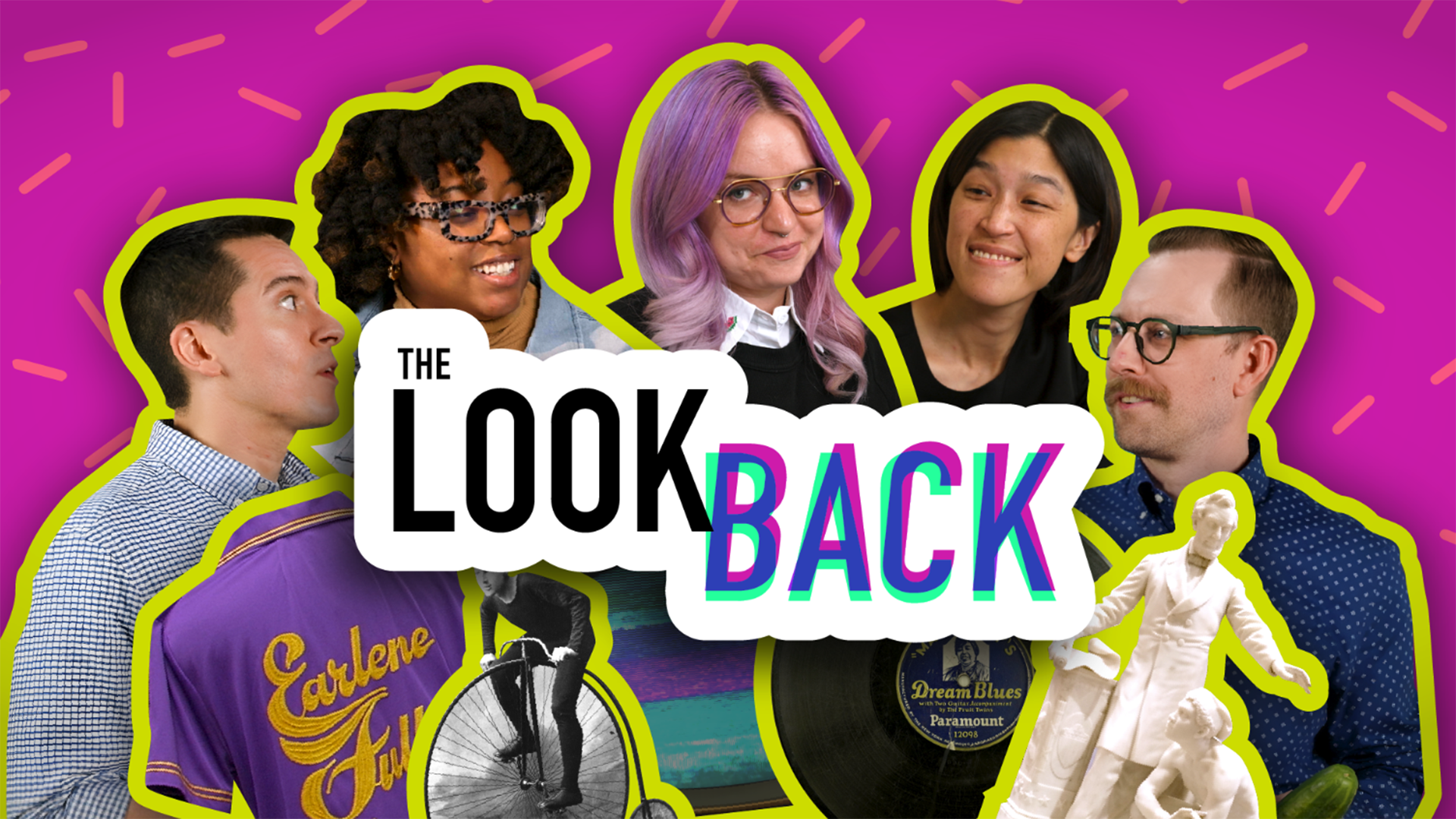

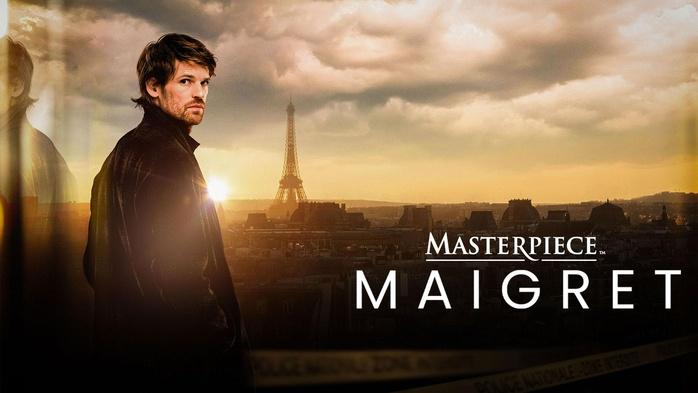



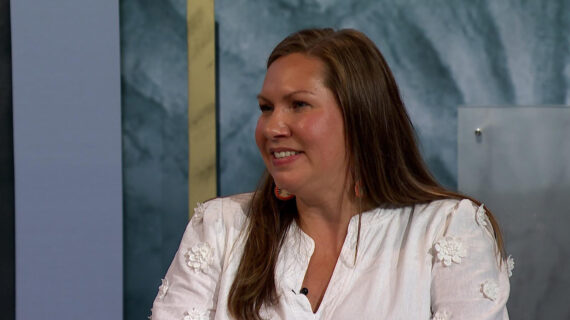
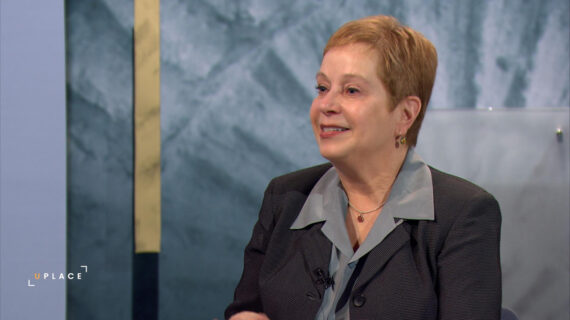

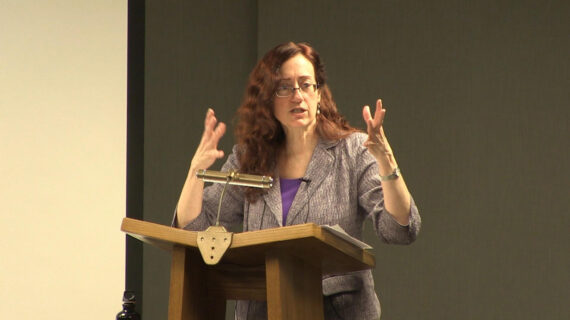
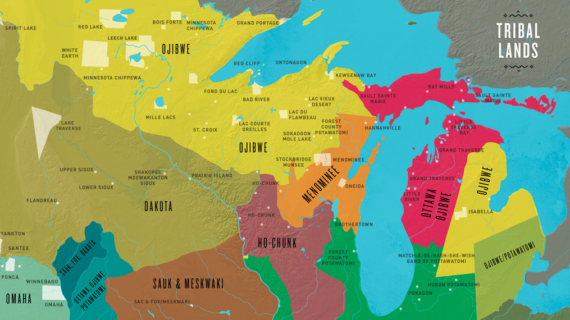


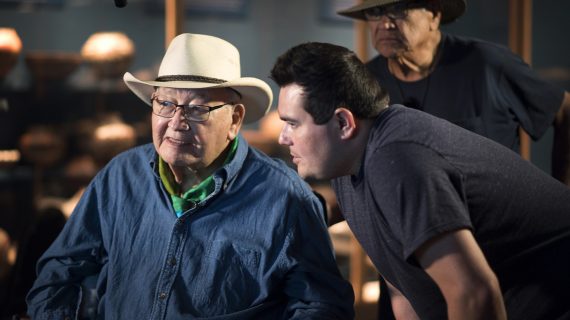

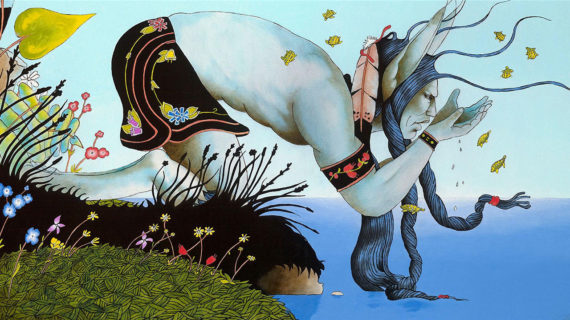

Follow Us